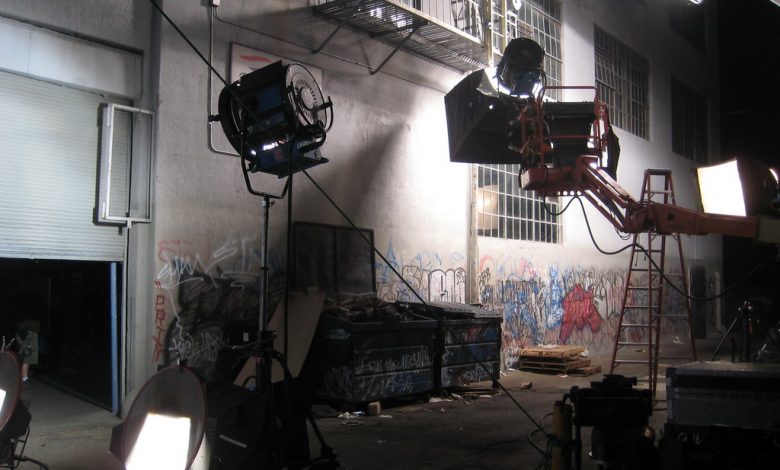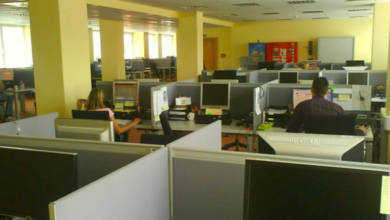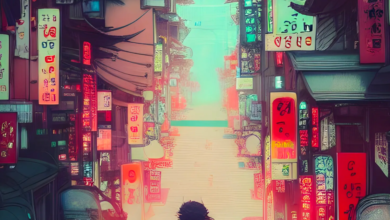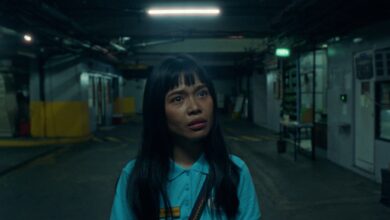
Scene-by-scene: How PH film industry ‘survived’ despite pandemic
An in-depth look into the Philippine Film Industry's journey amidst the coronavirus pandemic.
We’re almost two years into the pandemic, and you might find yourself wondering, “How come there are always new shows and movies coming up?”
That’s a perfectly normal question.
After all, we’re hearing of a nationwide lack of jobs due to strict protocols limiting the movement of supply, general transportation, and (of course) people.
Due to that, consumers like us are all “stuck” inside our homes with literally nothing better to do. Except for binge-watching the latest viral series or movie, of course.
So how come there is always new content being produced on a pre-pandemic basis? Like there’s nothing wrong? What’s really happening with the Philippine Film Industry?
Well, there’s a story here, and just like every movie, it demands to be told.
Movie Magic
Movie productions were usually a grand thing.
Cranes, lights, and rigs tower over the vicinity. Huge cameras line up on the block like the expensive machines that they are. Production staff are running around and shouting here and there.
There is an ambiance of urgency and utmost importance like nothing else matters in the world. Tick. Tock.
The director is pensively waiting for the scene to be set up; deep in thought, in front of his monitor. Pedestrians huddle up across the street and gossip haphazardly, “What movie is this? Is Piolo here?”, before the Audio Department guys shout “Quiet!”. But they don’t go silent – they keep talking.
Until “Piolo” comes in, all dressed up, walking like a superstar – because he literally is. And suddenly, it all dies down. Until nothing more is heard but silence.
You hear a little shuffling here and there. You hear someone cough. The curtains are drawn.
“Lights! Camera! Action!”
Such wonder. Such a magical place to be.
It is exactly what we imagined it to be, right?
Unlit Background
Sorry to burst your magical bubble, but everything you see in the movies is not real.
It’s all for show.
In reality, shooting in movie productions was not entirely the prettiest place to be.
Productions usually take months to finish. It’s not a one-day racket. It consists largely of scheduling and time management of the scene-per-scene of (usually) an hour and a half long movie. And most of the time, a movie of that length has about more than 120 sequences or scenes to be shot one by one.
Imagine the time that would take.
Usually, a production partakes in a 3 days a week schedule – including Sundays. Although this is all dependent on the availability of everyone in the set, core members and actors are the only people who can almost exclusively influence the dates decided upon. Other than those, the reality is, if you’re not a core member or an actor, you will most likely be replaced.
Be that as it may, “Work is work. You have to be professional about it,” according to one unnamed grip from the lights department.
So take that as you will.
Even if it means taking that the shoot will continue until sunrise. Meaning, taking time off the cast and crew’s rest where it will still go through with the next day’s schedule.
Sure, you see superstars and all that glitz and glamour. But the film industry is plagued with long working hours, countless delays, and always a lack of a budget.
One can also argue that it was only held together by one thing: the passion that comes with making movies.
So how bad can it be?
Internal Conflict
Imagine the physical toll that the people involved experience. Especially when “putok-araw”, an industry jargon used when a production lasts until sunrise, happens for three days straight.
One thing to note is that when these kinds of things happen, the next day’s schedule doesn’t adjust. They sleep for a bit, then wake up after two hours to shoot again. They rely on coffee and nicotine to keep going.
“Your staff and crew get tired; they don’t have the energy to run around and carry stuff. Your actors get tired after crying for a scene all day. Your director gets tired and can’t will himself anymore to focus on the direction of the movie”, says an unnamed production staff member. “Everybody needs sleep”, they add.
But to put it more simply, these things happen because of human error. Although here, one’s fault is everyone else’s. It causes a domino effect of delays upon delays. Ultimately resulting in:
- A mediocre movie
- An unfinished movie
- No movie at all
- A good movie (if you’re lucky)
“[Delays] are inevitable. You should come in [the set] expecting something bad to happen, not the other way around. That’s how you get prepared”, says a core member.
So how come they still push through it? Why don’t they just push it later, you know, in the coming days?
External Conflict
“You pay everyone in [the set]. Every day, 50 people at best. You pay everything to be here: the equipment, vehicles, food – everything”, another staff member explains. “[The money] comes from the producer. [One] only has so much money”, they add.
Basically, everything that happens in a film set costs money.
Weather, for example, is also a main perpetrator of delays, that is why there are more shoots held during the first half of the year than the second half. This is because the rainy season starts in mid-June until September.
But knowing that weather is unpredictable, being prepared and planning ahead is paramount for the success of the shoot.
“We can’t shoot exterior scenes when it rains”, one core crew member said. “It costs a lot: coats, tents, you get it. It also puts people at risk. They might catch a cold or something.”
It all boils down to one thing: it’s expensive. In the grand scheme of things, the film industry is still a business. No matter how tasteful and morally fair it may sometimes seem.
“But it’s fun”, the unnamed grip from the lights department said. “You’re always in a new [environment]. It’s never boring.”
This might actually be the reason that there’s so much pride cultured within the movie industry. Your exhaustion is mine and yours. It creates a kind of a bond, regardless of importance. It’s just the way it is, and so it went.
Inciting Incident
When everything came to a sudden halt after the President declared an ECQ over Luzon last March 16, 2020, that also meant that the film industry had to stop while everyone else tried to figure out what to do.
Our whole system fell apart. The everyday life that we knew and loved was shattered like the fragile thing that it was before our very eyes.
Literally.
3 months of absolutely nothing to be done except to stay still. It was crippling.
The film industry saw the closing of cinemas, an absolute halt of production, and several microcinemas running out of business.
“You have to understand that people weren’t paid to stay. Every movie-man is freelancing one way or another,” says one crew member. “It’s all a matter of connection and reputation.”
You get me in one shoot, I get you in another. Again – the brotherhood. That kind of thing.
“I don’t see it that way”, a prominent director said, “Raketera ka lang for life.”
Most film industry people were out of a job for more than three months. One even admitted to borrowing money online from students they met in their theses’ to buy diapers.
“We were desperate. There wasn’t anything. We haven’t heard anything [from my employer]”, they explained. “Nakakahiya (It’s shameful) — but we were desperate.”
And who can blame them?
Character Development
The PH film industry has fared well for itself, in all actuality. With cinemas and microcinemas closed, the industry big-wigs needed to find a platform to screen their films.
They chose to look at streaming, which in all honesty, revitalized a rather old-fashioned industry. They flooded the likes of Netflix with old and new local shows and movies. Some have even set up their very own, like VIVAMAX and UPSTREAM.
RELATED: [Ang Babaeng Allergic sa Wi-Fi: A Hidden Gem in Netflix PH]
“It’s good that we have this. We’re creating a platform where Filipinos can watch movies that are made for them by their kababayans”, a core crew member said.
They had rations, if you will. Rations of old, ready-to-watch films, and new not-so-quite-ready-to-watch-but-needed-polishing ones.
And these are all thanks to the three stages of a production which are:
- Pre-production (Writing, Planning)
- Principal Photography (Shoot proper)
- Post-production (Editing)
Every one of these takes up a huge amount of time to finish, especially post-production since this is responsible for the final look of the movie. Every stage is equally important; removing one is removing itself.
Due to that, they shoot in advance to compensate for everything that can and will happen.
But we all know that rations are limited. People were hungrier than ever, and it was all being depleted fast.
So something had to happen. The film industry had to surface, and strongly.
Flashes of Brilliance
People tried to innovate, as it always was with anything in times of trouble.
Industry people tried venturing into virtual or remote shooting. Since nobody could leave their houses, every aspect of the production was done through a video call.
Some sent cameras to the actors and asked them to record it. In this case, the directors weren’t able to see the footage until they were finished uploaded by the actors. They were blindly directing a film.
One particular 10-minute pilot episode took almost 5 days to complete using this method.
“It was difficult”, a core member expressed, “Everything was done remotely. It only sounds simple, but it’s super different when you’re actually there.”
Others used the actor’s own webcam and recorded it through the call or asked the actors to record it themselves. But this case limited creativity. Being that the only acceptable use of a webcam was a frontal shot, and overlooking that, the quality is not entirely good. These were the “video call” short films that were rampant in social media during the ECQ.
They mostly consisted of narratives driven by couples or family members falling out of their respective relationships. They were interesting premises, but knowing the type of hunger for content that netizens have, it was almost impossible to innovate if you weren’t willing to dabble into experimental filmmaking.
That is why even if these were an innovative workaround against the limitations of the pandemic, the truth was that it was essentially inefficient.
People were still hungry, they wanted unique stories – something that would appeal to their hearts.
Coming Back to the Foreground
Here comes the “good” news. Or at least, a bit better than the other topics we discussed.
Last June 7, 2020, the DOH, DOLE, and the FDCP in collaboration signed the Joint Administrative Order (JAO) No. 2020-001 on the Health and Safety Protocols for the Conduct of Film and Audiovisual Production Shoots and Audiovisual Activities During Covid-19 Pandemic.
It was a green light for productions to resume. Everyone celebrated.
This order placed a set of guidelines to be followed by EVERY production that will be held in the country. These were the major changes:
- Inclusion of a Safety Officer (Oversees and Enforces the COVID-19 Guidelines)
- An “Entry Swab Test” and an “Exit Swab Test”
- A strict, 12-hour shooting timeframe
- The invention of the “lock-in shoot (Productions would stay in a single location and nobody can enter)
“We can’t go home”, an audio recordist said. “But feeding your family is more important than that. Okay na ‘yon (That’s OK).”
Rising Action
As the film industry started resurfacing, people started to get their jobs back as production studios instantly pounced upon the golden opportunity. It also provided opportunities for more people wanting to get into the movie business, especially now that interest in narrative-driven content was getting popular by the second.
They were also getting rest due to the shooting timeframe set by the guidelines. Usually, they wake up at 5 am, grind at about 9 am, and then end when the clock hits 5 pm. There were also rest days after every 3 days of shooting.
“Other than the swab test, everything is great”, one core member said. “Nobody wants anyone jamming something up their nose.”
People were required to wear masks on set. At the onset of it all, some even wore PPEs to wear during the shoot. But that was quickly dismissed when they required set people to be vaccinated in order to participate.
Lock-in wise, some people were saying that it felt like they were on a vacation. Especially since some stories have scenic locations in order for them to look more cinematic.
Adding to that, since they were locked-in, meaning they couldn’t go in or out except for changing locations or going to and fro their lodging … they were alone in these scenic locations. It was a real treat.
“My favorite shoot was in Baler”, one staff member expressed, smiling. “We had it to ourselves. Walang mga tsismosa (There weren’t any bystanders). On rest days, we went swimming. I’d want to go back.”
Everyone was complying. They were just glad to shoot again. It looked as if it was the perfect solution to the problem.
Too perfect.
Major Stakes
Oh no, it’s a health risk!
Obviously, the too-good-to-be-true solution was a major health risk for all the people involved in productions.
The utopian setting was supposed to be: shoot in the location, go back to the lodging, shoot again. But of course, that wasn’t always going to be the case.
“People got sick. We didn’t know why”, one core member said. “Usually, these were the drivers first. And then we knew what was going on.”
One problem with that is the changes in settings, and one thing you must know about settings are these are governed by locations indicated by the script.
It is widely understood in the set that when you change settings, you travel to a different location. Sometimes even in a different city or province, even after all the extensive planning done before.
Of course, every one of these locations has caretakers who talk to the respective members responsible for the locations – like the Location Manager, for an obvious example.
These caretakers, of course, weren’t “technically” considered as part of the production. They were just representatives of the buildings they work under. Given that fact, they are exposed to a myriad of people who god-knows has the virus or not.
Falling Action
Cases within productions began to pop up one by one, causing major financial and scheduling damages, with some even causing an entire production to stay within their location for two weeks.
Some even canceled the shoot entirely since it was cheaper that way.
“We had to make do,” a crew member expressed. “Sometimes the food wasn’t even good. We had to make do.”
Not to mention, shooting lock-ins poses a health risk especially for people with health conditions. Medicine wasn’t entirely accessible unless declared. And even so, it wasn’t exactly easy to obtain them, considering some stories required productions to shoot in remote locations – far away from cities.
It was also made more expensive from the costs of countless swab tests, lodging, masks, and other safety equipment needed to shoot in a pandemic. The film industry was operating on an entirely new playbook.
“It cannot be helped”, one prominent director said. “Lock-ins have become about 30% more expensive because hotels and resorts are already fully operational and charging regular prices.”
There was something wrong with the system, and they knew it. But is there any other way?
Uncharted Middle Ground
One thing we can take away from this little case of push-and-pull is that there is definitely something good that happened. People are getting their content and film workers are getting their rest.
Nobody wanted to exceed the 12-hour limit since they would be fined for an enormous amount of money.
“As long as people are fully vaxxed and pre-tested, it is the best way there is”, said a prominent director. “We have to keep giving these people jobs, we can’t simply stay still and frown about the future.”
While there are definite pros and cons of the film industry and its new normal, the question is: what does it mean for production workflow in the few years to come? Are there aspects where the bubble risks bursting? Or more profitable opportunities abound?




